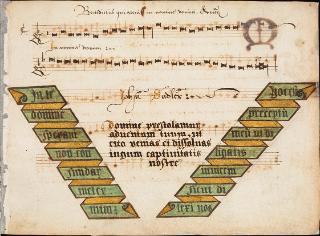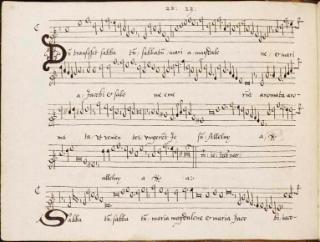More Info
Tudor Partbooks: The Manuscript Legacies of John Sadler, John Baldwin and their Antecedents
This three-year project – a collaboration between the Universities of Oxford and Newcastle funded by the Arts and Humanities Research Council – will digitize all the extant manuscripts of Tudor polyphonic music from c.1510-1580 preserved in partbook format. These will be made publicly available via the DIAMM website.
 Two key exemplars of this repertory – the Sadler and Baldwin partbooks – will also be restored and reconstructed. The Sadler partbooks are badly corroded by the acidic ink used in their copying, leaving them extremely fragile and partially illegible.A process of digital reconstruction will restore these manuscripts to a readablestate, allowing their music to be accessed and performed again.
Two key exemplars of this repertory – the Sadler and Baldwin partbooks – will also be restored and reconstructed. The Sadler partbooks are badly corroded by the acidic ink used in their copying, leaving them extremely fragile and partially illegible.A process of digital reconstruction will restore these manuscripts to a readablestate, allowing their music to be accessed and performed again.
The Baldwin partbooks require a different process of restoration. This is a set with one book missing (the tenor), rendering all their music incomplete. While some of the music can be found in other sources, about sixty pieces are found nowhere else. A process of collaborative reconstruction drawing on the expertise of both scholars and performers will create a plausible version of the missing parts, allowing these works to be performed and developing a greater stylistic understanding of the repertory in the process.
The research team will also be undertaking a detailed scholarly investigation of these sources, looking for connections in how they were copied, their notational styles and practices, their format, their contents, and the contexts in which they were written and used. In particular, although these partbooks postdate the Reformation, they are the dominant sources for much English church music from earlier in the century. We’ll be looking at the extent to which these sources preserve pre-Reformation practices, or make adaptations to suit later (and non-liturgical) use.
We’ll be making the results of this project available via the DIAMM website, through publishing restored facsimile editions of the Sadler and Baldwin partbooks, and through academic articles and publications. There will also be a series of reconstruction workshops, study days, public events (including concerts and exhibitions), and podcasts throughout the project.






